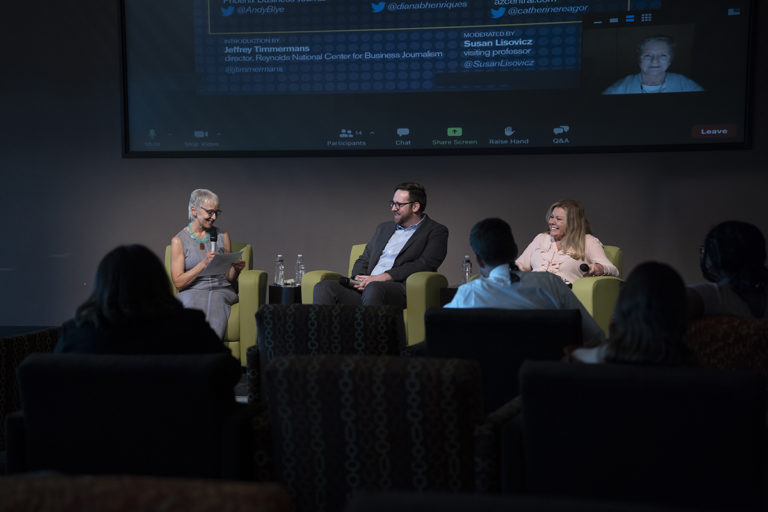Last week we held a panel at the Walter Cronkite School of Journalism featuring three business journalists: Andy Blye, technology and finance reporter at the Phoenix Business Journal, Diana Henriques, contributing writer and former finance reporter at the New York Times, and Catherine Reagor, real estate reporter at the Arizona Republic.
The panelists offered insight on their careers, what life was like on the business beat, and answered questions from the audience. Here are some key takeaways from the evening.
Endless curiosity can lead to exciting new angles
One of the biggest ongoing stories in Blye’s beat is a new semiconductor plant currently under construction in northern Phoenix. The plant has received coverage from several national outlets, but its ongoing impact on the surrounding community is an extremely important local issue. Blye started examining Phoenix zoning records from the area and talking to nearby small businesses.
He noticed there were a lot of hot air balloons in the area and he wondered how those balloons navigated the construction cranes. Soon, Blye found himself taking a trip in a balloon, listening as a pilot described how the construction was forcing balloon operators to adjust their landing zones.
“The thing I’ve come to realize about business reporting is that people that read the business section like stories too,” Blye said. “They like the same interesting characters and interesting things that are happening… the hot air balloon company is not as big a deal business-wise but it is [impacted] by the semiconductor plant coming.”
Familiarize yourself deeply with your beat – and its history
When news came over the wire that a stockbroker named Bernard Madoff had been arrested on securities fraud charges, Henriques seized upon the story before many of her peers fully grasped what was going on. Henriques knew instantly that Madoff’s arrest was a story of extremely high magnitude because she had studied the history of the formation of the Nasdaq index and understood how intimately involved Madoff had been in that process.
“If I hadn’t had that depth of historical knowledge about the development of the market, I would have missed it,” Henriques said.
In Henriques’ case, those benefits included eventually landing the first interview with Madoff after his arrest, which led to the ensuing book Henriques wrote about Madoff, resulted in an HBO movie adaptation that Henriques was not only heavily consulted on but was cast to play herself in, making her acting debut opposite Robert De Niro as Madoff.
“I absolutely urge you, even if you don’t know numbers, learn history,” Henriques said.
Seek out diverse sources and perspectives
In response to a student question about how journalists should address and cover systemic racism and racial inequities in the business world, Blye and Reagor both stressed that virtually any business beat has those issues and journalists should be obligated to highlight them. Reagor spoke about a current long-term project she is working on examining the lingering effects of redlining in housing insecurity trends and eviction practices within the Phoenix metro area.
Henriques stressed that every journalist must be intentional about broadening and diversifying their base of sources, despite the extra work it will take to do so.
“Reporters tend to know what their sources know,” Henriques said. “And if all of their sources are white guys who went to Yale, you’re just going to know what white guys who went to Yale know.”







